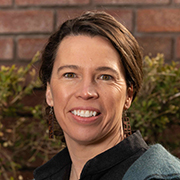A .gov website belongs to an official government organization in the United States.
A lock () or https:// means you've safely connected to the .gov website. Share sensitive information only on official, secure websites.

Climate change and land use are altering the landscape of the U.S. Great Plains, producing increases in windblown dust. These increases are investigated by combining coarse mode aerosol observations from the Moderate Resolution Imaging Spectroradiometer (MODIS) sensor in addition to the Aerosol Robotic Network (AERONET) and Interagency Monitoring of Protected Visual Environments (IMPROVE) aerosol monitoring networks. Increasing trends of up to 5%/year in MODIS aerosol optical depth for dust observations are observed throughout the Great Plains (2000–2018). Cropland coverage has increased 5–10% over the majority of the Great Plains (2008–2018), and positive monthly trends in IMPROVE (1988–2018) and AERONET (1995–2018) coarse mode 90th percentile observations coincide with planting and harvesting seasons of predominant crops. Presently, results suggest increased dust due to agricultural expansion is negatively influencing human health and visibility in the Great Plains. Furthermore, results foreshadow a future where desertification becomes an increasing risk in the Great Plains.
Dr. Gannet Hallar attended a liberal arts college in Northern Missouri, Truman State University, and completed a Bachelor's degree in Physics. During college, Dr. Hallar also had an internship at the National Weather Service office near her childhood farm. These experiences led her to the University of Colorado, where she received her M.S. and Ph.D. in Atmospheric Sciences. During her graduate work, she took atmospheric measurements around the world, including a winter experience in Antarctica. After graduate school, Dr. Hallar accepted a postdoctoral research position as a National Research Council Fellow at NASA Ames in California. In this position, she traveled to a remote island in the Indian Ocean to study air pollution. She then joined the Desert Research Institute as Director of Storm Peak Laboratory, a high elevation atmospheric science laboratory in Steamboat Springs, Colorado. Storm Peak Laboratory has undergone major changes under her leadership over the last 15 years including new instrumentation, new research foci, new field courses, and a significant building expansion. Dr. Hallar is now an Associate Professor of Atmospheric Science at the University of Utah, where she leads the Hallar Aerosol Research Team (HART). Her path has been possible due to two strong mentors, Dr. Maria Di Stefano at Truman State and Dr. Linnea Avallone at the University of Colorado.
ALL Seminar attendees agree not to cite, quote, copy, or distribute material presented without the explicit written consent of the seminar presenter. Any opinions expressed in this seminar are those of the speaker alone and do not necessarily reflect the opinions of NOAA or CSL.